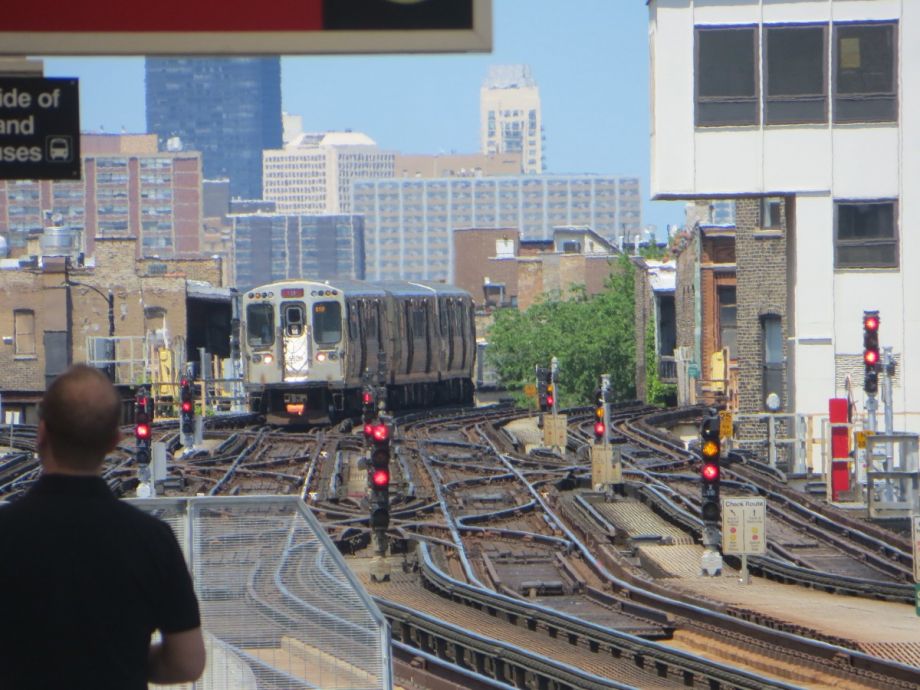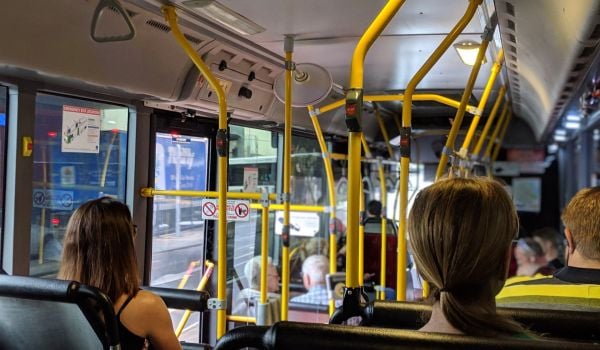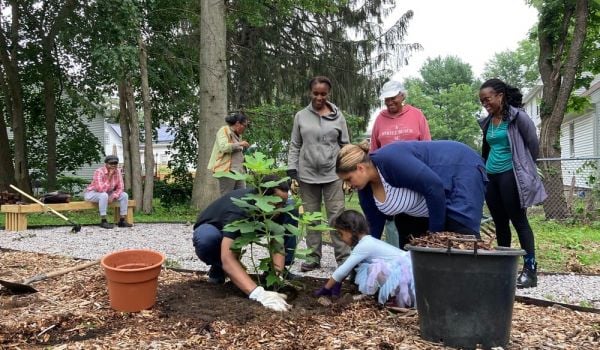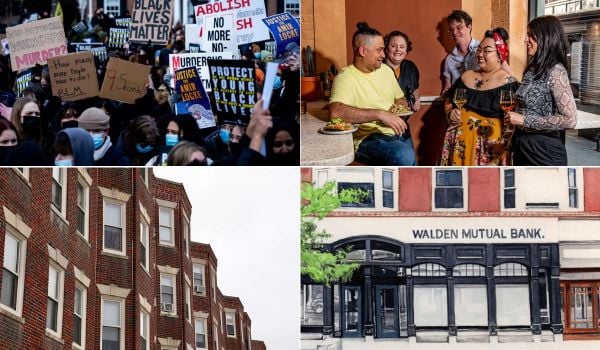Welcome to “The Mobile City,” our weekly roundup of newsworthy transportation developments.
Few American cities do as well as Chicago has done in terms of providing rapid transit service that covers the city like a blanket; only New York and Washington have systems that provide coverage that’s as dense or denser. But the blanket has some holes in it.
The just-passed (but not yet signed by the president) coronavirus relief bill offers assistance to transit agencies struggling to avoid slashing service in the face of continued low ridership. That assistance will come a little too late to keep the Massachusetts Bay Transportation Authority (MBTA) from going ahead with previously announced service cuts that even its own advisory board objected to, but in response to those objections, the cuts the agency approved aren’t as big as they originally were to have been.
And maybe you haven’t noticed this, but the COVID-19 pandemic has also produced a dramatic drop in the number of shared scooters darting down crowded sidewalks and piling up in building entryways. Which may make right now the right moment for a major manufacturer of e-scooters to announce new technology designed to get those scooters off the sidewalk. Once this all blows over and at least some of us return to the office downtown, those e-scooters might become a pedestrian pain in the butt once again.
Those scooters can and should share the street with the cars that dominate them, but they can’t share the freeways with them. Worse still, those freeways cut off communities from jobs and shopping centers and discourage outsiders from venturing into those communities. Many of the hardest-hit such communities are filled with Black and brown residents; as Black freeway critics put it in the 1960s, the freeways were “white men’s roads through black men’s homes.” And Transportation Secretary-designate Pete Buttigieg, who got dinged during the 2020 Democratic primary season for racial insensitivity, has indicated that one of his goals as secretary is to get rid of those concrete forms of racism.
Chicago Red Line Extension Advances; Critics Say, “More Like This, Please”
Your columnist has long considered Chicago’s mostly-above-ground rapid transit system its own best advertisement thanks to its extensive use of freeway medians as rapid-transit rights of way. Imagine: You’re stuck in stalled traffic on the Dan Ryan Expressway while on your left, CTA trains zip by. Wouldn’t you give serious consideration to leaving your car at either home or at a park-and-ride next time?
Residents of the city’s south-side suburbs are moving one step closer to having that opportunity via a planned extension of the CTA Red Line, which currently runs in the Dan Ryan median as far south as 95th Street. Mass Transit reports that the CTA’s Red Line Extension project, which would take the line south to 130th Street via Union Pacific and former Illinois Central Gulf rights-of-way, has gotten the go-ahead to enter the New Starts Project Development phase of the Federal capital grant application process by the Federal Transit Administration (FTA).
During the two-year project development phase, CTA will complete its Final Environmental Impact Statement and set aside funds for the minimum 30 percent non-federal match to qualify for a Full Funding Grant Agreement. In this case, a federal grant would pick up more than $1 billion of the extension’s $3.2 billion price tag.
Some Chicago transportation observers reacted to the news with articles saying that, while this was a good start, more needed to be done. An essay in Streetsblog Chicago noted that both former Mayor Rahm Emmanuel and civic leaders have actually proposed rail and bus rapid transit services that would create a true lattice of rapid transit spreading across all of the city’s “transit deserts,” but none of these efforts have actually produced any improved service.
Fair enough criticism. Meanwhile, an article in Government Technology put a price tag on bringing the rest of the country up to the starting line. The article cites Urban Institute research that found that for about $17 billion a year, the FTA could bring the level of bus service in every city in the country of 100,000 or more inhabitants up to the level found in Chicago today.
MBTA Pushes Ahead with Service Cuts, But Approves Fewer of Them
The MBTA’s decision to hold off on approving a package of deep cuts in service (“Mobile City,” Dec. 16) has proved to be a pause that refreshes instead.
Railway Age reports that the MBTA’s Fiscal Management and Control Board voted 3-2 to implement a scaled-back version of the service cuts it had announced in October. Spared from cuts in the slimmed-down package: the last five stops on the Green Line’s E branch, the last hour of daily service on surface and rapid transit, ferry service to Hull via Hingham, and weekend regional rail service on five lines. All the other cuts, including ending regional rail service at 9 p.m. weeknights and weekend service on all other lines, eliminating the direct ferries to Charlestown and Hingham, and reductions in service frequency across the rail transit system, will take effect.
The “T” said in a news release, “This plan maintains up to 70% of pre-pandemic service levels. Weekday service levels will be further optimized and shared with the board in January 2021.” And Railway Age noted that the agency says that the cuts are a temporary response to lower ridership. The article raises the question of whether the management board could or should have adopted the recently introduced “storm schedules,” which cut the number of daily trains by 44 percent by trimming peak-hour service and lengthening midday headways while keeping night and weekend service.
The article, written by a member of a local advocacy group, the Rail Users’ Network, also quotes fellow advocates who argued that it was time for citizens to push back against the cuts, which they say will simply end up sending regional rail riders back to their cars.
New Technology Senses When E-Scooters Are Running on Sidewalks
One of the biggest complaints business owners, pedestrians and city officials have lodged against the shared e-scooters that have blossomed in cities across the country is that the vehicles make it harder for people to safely use the sidewalks or enter local businesses.
Now one of the biggest makers of e-scooters has released what it hopes will be a technological solution to the problem. According to an article in The Washington Post, Spin, the e-scooter division of Ford Motor Company, has partnered with the technology company Drover to outfit its next generation of e-scooters with cameras and sensors that can detect when a user is riding them on a sidewalk or parking them incorrectly.
Spin CEO David Ko called the development “Spin’s latest step in building trust in e-scooters among consumers and cities” in a news release announcing the development. He also said that the technology would enable cities to enforce local regulations and promote safer e-scooter use. Several cities where e-scooter networks have been launched have moved to limit the number of scooters allowed to operate and regulate how and where they could be used. Ko also said that the technology serves as a basis for developing more advanced safety features such as forward collision avoidance and wrong-way riding detection.
While e-scooter use also plunged when COVID arrived in the United States, scooter use has recovered somewhat as lockdown orders were eased and city residents sought alternatives to using mass transit.
Since Ford acquired it in 2018, Spin has expanded its presence dramatically from the 13 cities and college campuses it served at the time, adding more than 100 U.S. cities to its network in 2019. It plans to roll out the new Spin Insight Level 2 in the U.S. and the United Kingdom in the coming year. It also plans to expand to New York in the spring, and it hopes this technology will enable its scooters to comply with New York ordinances.
Transporation Secretary Pledges to Tear Down “Racist” Freeways
According to an article in Streetsblog USA, shifting Federal transportation policy to place greater emphasis on transit is only the beginning for Transportation Secretary-designate Pete Buttigieg’s plan to transform how the nation gets around. Just as important, he says, will be removing the urban freeways that sliced and diced mostly Black city neighborhoods as they sped white suburbanites’ flight to the suburbs.
“It’s disproportionately Black and brown neighborhoods that were divided by highway projects plowing through them because they didn’t have the political capital to resist,” Buttigieg told CNN’s Jake Tapper on Sunday. “We have a chance to get that right.”
Buttigieg made the same point in less snappy language in his remarks after President-elect Joe Biden picked him to serve as his Transportation Secretary. As many political observers expect infrastructure improvement to be one of the big items Biden will work to deliver in his first year in office, Buttigieg may well hold one of the most influential positions in the Biden cabinet, and his remarks on transportation equity indicate that he will seek to undo the damage to city neighborhoods and Black people especially done by decades of federally subsidized road-building.
At least some planners and transportation activists are willing to give him a chance: “As someone who is queer, a millennial, Midwestern, and has strong ties to the military (as a military kid), I’ve eagerly watched ‘Mayor Pete’ since he came on the scene. It is exciting to see someone who has blazed a path as a first in many ways ascend to this important position,” Tamika Butler, former executive director of the Los Angeles Neighborhood Land Trust, wrote following Biden’s announcement. “Buttigieg has always been willing to try and has succeeded where people have doubted him.”
Know of a development that should be featured in this column? Send a Tweet with links to @MarketStEl using the hashtag #mobilecity.

Next City contributor Sandy Smith is the home and real estate editor at Philadelphia magazine. Over the years, his work has appeared in Hidden City Philadelphia, the Philadelphia Inquirer and other local and regional publications. His interest in cities stretches back to his youth in Kansas City, and his career in journalism and media relations extends back that far as well.
Follow Sandy .(JavaScript must be enabled to view this email address)
















